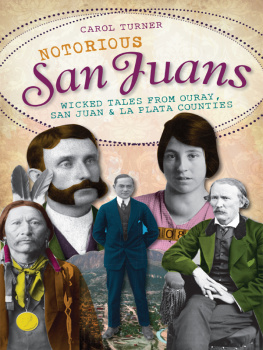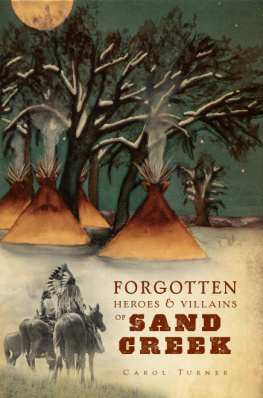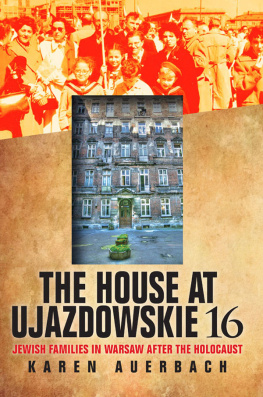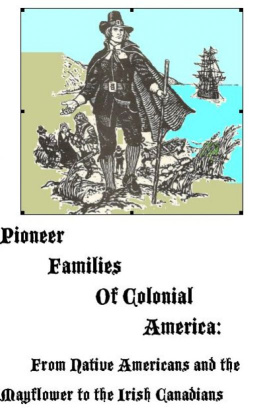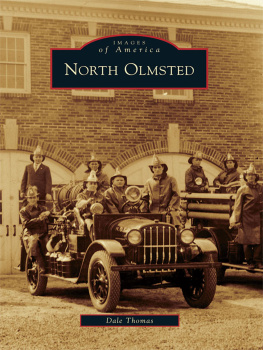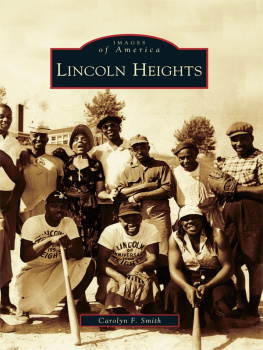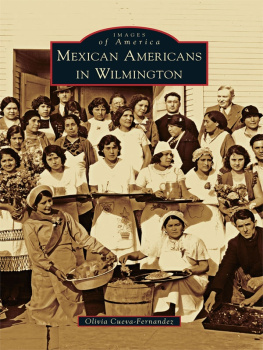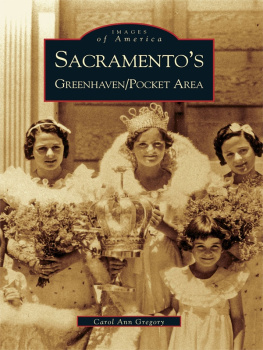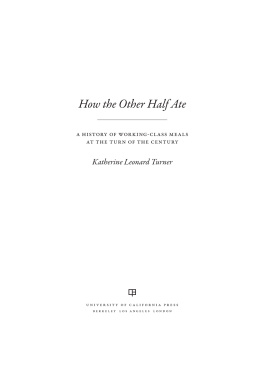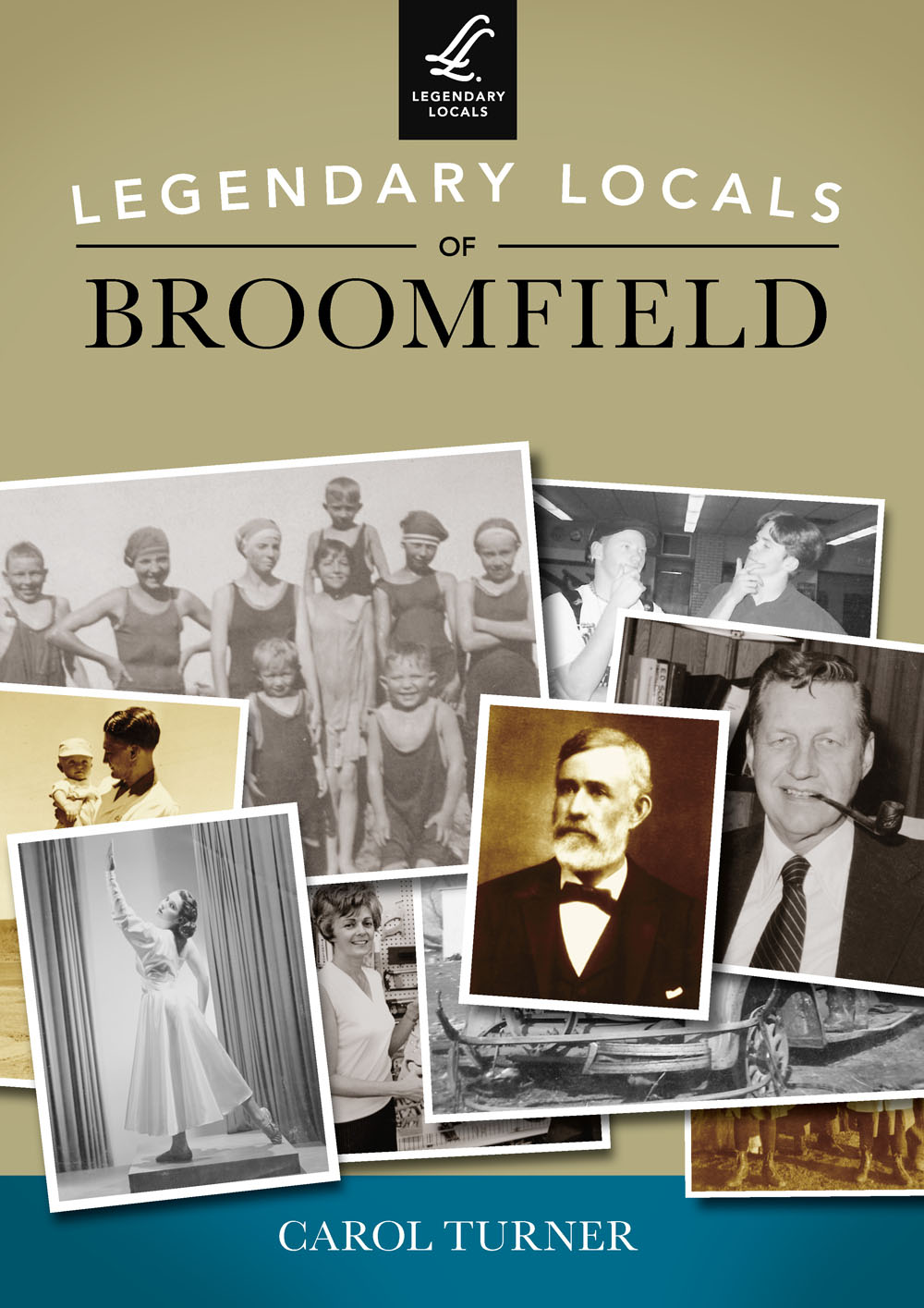
LEGENDARY LOCALS
OF
BROOMFIELD
COLORADO


Bob Ide
Ide (left) was involved in a number of significant Broomfield developments. He is pictured here with commercial broker Bob Bryant. For more information on Ide and his work, see . (Courtesy of Bob Ide.)
Churchs Stage Stop and Ranch
George and Sarah Church built Churchs Stage Stop and Ranch on the famous Overland Trail. For more information on this establishment, see . (Courtesy of Charles McKay.)
LEGENDARY LOCALS
OF
BROOMFIELD
COLORADO
CAROL TURNER

Copyright 2014 by Carol Turner
ISBN 978-1-4671-0150-9
Ebook ISBN 9781439647875
Legendary Locals is an imprint of Arcadia Publishing
Charleston, South Carolina
Library of Congress Control Number: 2013955327
For all general information, please contact Arcadia Publishing:
Telephone 843-853-2070
Fax 843-853-0044
E-mail
For customer service and orders:
Toll-Free 1-888-313-2665
Visit us on the Internet at www.arcadiapublishing.com
Dedication
Dedicated to the Broomfield pioneers and notables who passed away during the writing of this book:
David Barber, Vic Boccard, Anne Crouse, and Walt Spader.
On the Front Cover: Clockwise from top left:
Jane Morrow Spain, founder of Morrow School of Dance (courtesy of Jane Morrow Spain; see ).
On the Back Cover: From left to right:
Zang family, original landowners (courtesy of Cynthia Zang Facer Clark; see ).
CONTENTS
ACKNOWLEDGMENTS
The author gratefully acknowledges the help of the many folks who contributed photographs and stories for this book. Their histories are marvelous and inspiring, and I have cited their names with the images they provided. A number of people were of particular help during this endeavor, including Charles McKay, Janet Ridsdale Justice-Waddington, Terrill Bashline, Nila Brummund, Judy Jessup, Beverly Hansen, Evonne Damiana, Lester Brunner, Rene Kozisek, John Atkinson, Jane Spain, Mabel Massey, Peggy Atkinson, Anna Mae Anast, Kenn Amdahl, Maureen Testa, David Jennings, Dianna Wilson, Jay Willey, Bob Ide, and Ron and Marjorie Lantz. Thanks also to Silvia Pettem, author of Broomfield: Changes Through Time; Lou Walther, author of Gem of the Mountain Valley; and the Broomfield Enterprise reporters who have written about the people in this book. Their work provided a foundation for the book. Some of these stories appeared in different form in my column in the Broomfield Enterprise, and I owe thanks to editor Julie Baxter. Thanks also to Wendy Hall and the other helpful folks at Boulders Carnegie Branch Library for Local History, and Steve Fisher from Penrose Library at the University of Denver.
INTRODUCTION
Creating this book involved a rewarding journey through the living Broomfield community and contact with those who strive to preserve its past. Nearly all the photographs in this collection came from Broomfield families and citizens, or other descendantsfolks who preserve and guard their own local family histories or who themselves became notable figures in the history of the city. The images and voices in this book represent a particular sort of human: one who steps into the unknown, who creates a community out of a windy plain, and who notices a communal need and does whatever must be done to fill it.
The history of Broomfield unfolds in several distinct parts. It starts with the pioneer families who began arriving in the 1860s, followed by those who came a century later and built the new Broomfield. Originally the land of the Cheyenne and Arapaho tribes, Broomfield at first was little more than a couple of stage stops on the Overland Trail, also called the Cherokee Trail. These consisted of Churchs stage stop, operated by the Church family, and Rock Creek stage stop, run by a series of proprietors, including the Millers, who later founded Lafayette, and Abner Goodhue, namesake of the Goodhue Ditch. For a brief period, the area was known as Rock Creek.
After only a decade or so, the era of the stage ended with the arrival of the railroad. The area called Rock Creek became a train stop known as Zangs Spur, named after the brewers Philip Zang and his son, Adolph. The Zangs of Denver owned a large swath of land on which they raised Percheron horses. Both the Churches and the Zangs played a prominent role in the critical task of bringing water into these arid plains, creating many of the first ditches and reservoirs that would ultimately enable its settlement by a group of hardy farming families.
These families became the original Broomfield pioneers. They continued the endless search for water, developing irrigation systems and wells. They planted fields with wheat, corn, oats, and alfalfa; they raised chickens and dairy cows; they produced milk and cheese. Despite notable mortality rates, family tragedies, and uncertain economies, many of them stayed on, expanding their farms and raising families, who then grew up to raise their own families.
From the earliest days of the 20th century until the late 1950s, Broomfield remained a quiet farming community with very little growth in population. The area was hard hit by the Depression, and many families sought their fortunes elsewhere. Folks who grew up in Broomfield during the 1930s and 1940s remember happy days as farm children. They often had after-school chores, but they also spent delightful afternoons swimming, boating, and fishing in local ponds. They joined clubs and danced at the grange. Some found partners among their neighbors, married, and raised their own families in the area that had come to be called Broomfield.
Everything changed in the late 1950s with the creation of the Denver-Boulder Turnpike. A group of investors called the Turnpike Land Company developed plans to build a new city they initially called the City by the Turnpike, and Broomfield Heights. The new Broomfield was born.
The postwar transition from farm community to city was relatively swift. A new generation of young families began arriving, purchasing brand-new homes, often via the GI Bill. There was no city government, no infrastructure, no community services, so the citizens created these things themselves. They opened tiny cottage schools in houses, they volunteered as ambulance drivers, they gathered donations to hire a couple of policemen and lease a police car. Some of the towns early entrepreneurs played critical roles in this process, endlessly donating time and money to help build the new city. Eventually, a group of citizens succeeded in incorporating the area into a proper city, including a mayor and a city council. Much of this initial work was done by volunteers who were not in it to make a dime, but to build a community.
In the latter decades of the 20th century, another group of community-minded individuals stepped in with new voices. They fought for open space, baseball fields, soccer teams, museums, libraries, a childrens center, senior services, victim services, arts, and culture. These people helped create that additional, enriching layer of human activity that makes a true community out of a group of houses and shopping malls. Together with those entrepreneurs, public officials, and early volunteers who built the place, they helped to make the city into a home.
Next page

